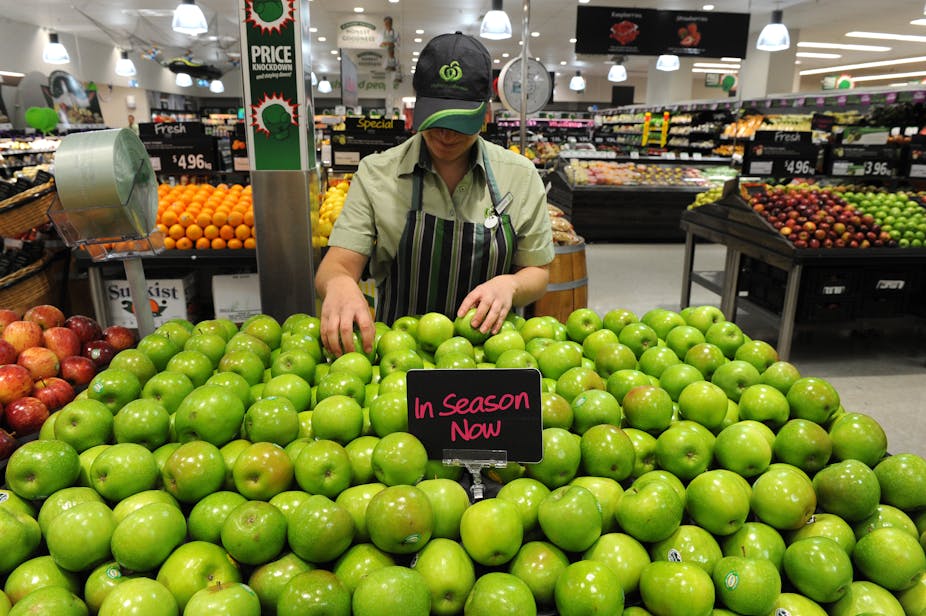“The Americans are screaming blue murder because WalMart and their competitor have now reached about 23% market share. Here we have two supermarkets with a market share of over 80%, so if they decide to cut down the amount of money they are going to pay farmers and jack up the price to the consumers, they can, because there is no competition.” - Bob Katter, media release, 17 June.
Federal MP Bob Katter, the founder of Katter’s Australian Party (KAP), wants the market dominance of our supermarket giants to be an election issue. He argues that “we have two supermarkets with a market share of over 80%” and he is pushing for laws to force them to reduce it to no more more than 20%. But, according to a report in The Australian, the “industry” puts the market share of the two major supermarket chains at “closer to 60%”.
So who is right?
Katter’s 80% appears to be an extrapolation of a 1999 parliamentary report (although this statement from Hansard indicates he believes the figure is now close to 90%). The 80% estimate is well-known. Justice Arthur Emmett of the Federal Court referred to it in 2011 when considering the acquisition of the Franklins supermarket chain by Metcash Ltd.
So, is that “game, set and match” Katter? Not quite.
The 80% figure is consistent with the Nielsen Company’s ScanTrack data, based on the value of sales. Over the five years from 2004-2008, this data showed the combined Coles and Woolworths national market share in packaged groceries steady at just under 80%. The 2008 report by the Australian Competition and Consumer Commission into the competitiveness of retail prices for standard groceries provides a brief background.
The ScanTrack data covers a “selection of dry groceries, dairy and frozen foods as well as a number of non-food items, but does not cover fresh products”. As at 2008, it covered Coles, Woolworths, and Metcash (including Franklins) with an estimate for Aldi.
The product selection and the range of stores both matter. For example, after considering a range of data on packaged groceries, including outlets not included in ScanData, the Australian Competition and Consumer Commission concluded:
“[P]ackaged groceries is the category most heavily dominated by the [major supermarket chains]. While 78% represents the highest the share is likely to be… [a] figure of approximately 70% seems a reasonable assessment.”
Further, Coles and Woolworths have a lower share in fresh fruit and vegetables, fresh meat and bakery products that are not included in the ScanData. Using Roy Morgan survey data, the competition regulator concluded that the market share of Coles and Woolworths in fresh fruit and vegetables is “no more than 50%”. It reached a similar conclusion for fresh meat and bakery products and found that Coles and Woolworths had market shares of between 50 and 60% for dairy and deli products.
The consumer regulator concluded:
“Based on the information available to it … [Coles and Woolworths together] account for between 55 per cent and 60 per cent of consumer expenditure on grocery items”
This is more in line with industry claims than Katter’s.
Finally, what about Katter’s claims on supermarkets in the USA? The US Department of Agriculture reports that the four largest US grocery stores had a market share (by sales) of 37.3% in 2011. It also notes that Walmart’s sales were $US109.4 billion in 2011, with the second largest supermarket Kroger having sales of $US71.1 billion. These sales figures include both food and non-food grocery sales.
This means that the smallest possible market share for Walmart and Kroger combined is about 21%. So Katter’s 23% claim looks reasonable.
Verdict
The 80% estimate is well-known but doesn’t take all groceries into account. If you include fresh food such as fruit and vegetables, the best estimate is that Coles and Woolworths control between 55-60% of Australia’s grocery market.
Review
The check is correct. Reports do suggest the percentage of market share held by Coles and Woolworths at between 70 and 80%. For instance, a Deloitte Access Economics report of October 2012 prepared for Coles identified Woolworths holding 41.1% and Coles 31% - a total of 72.1%.
But supermarkets sell more than just packaged dry groceries. If you include such things as fruit, vegetables and meat, the giant retailers’ market share shrinks to around 60%. – Gary Mortimer

